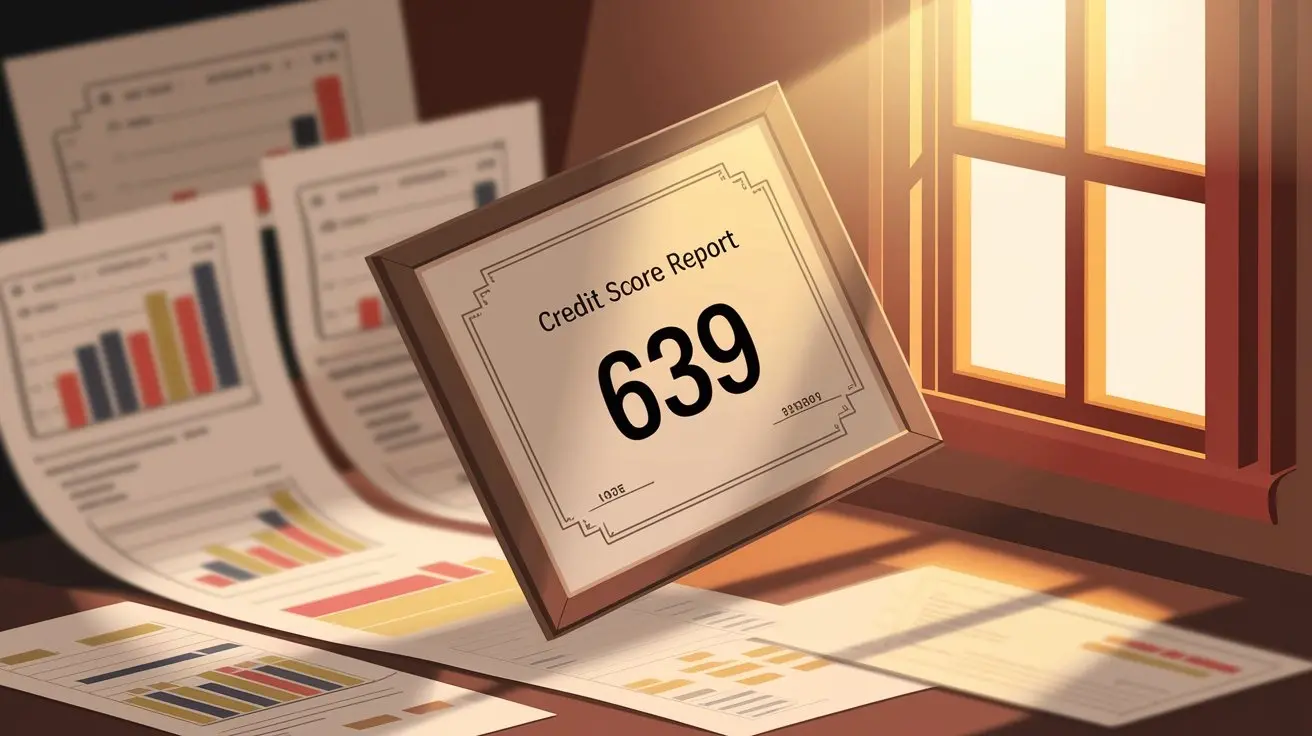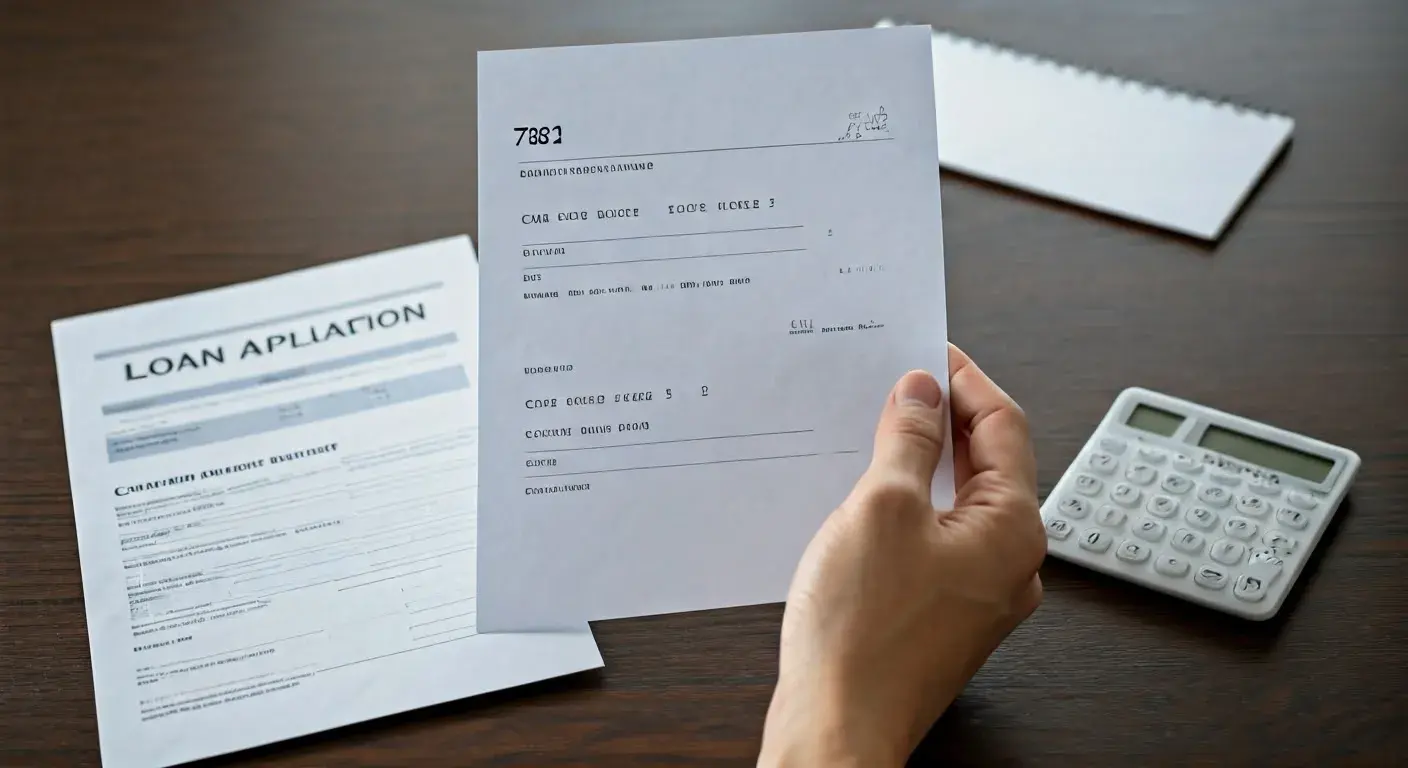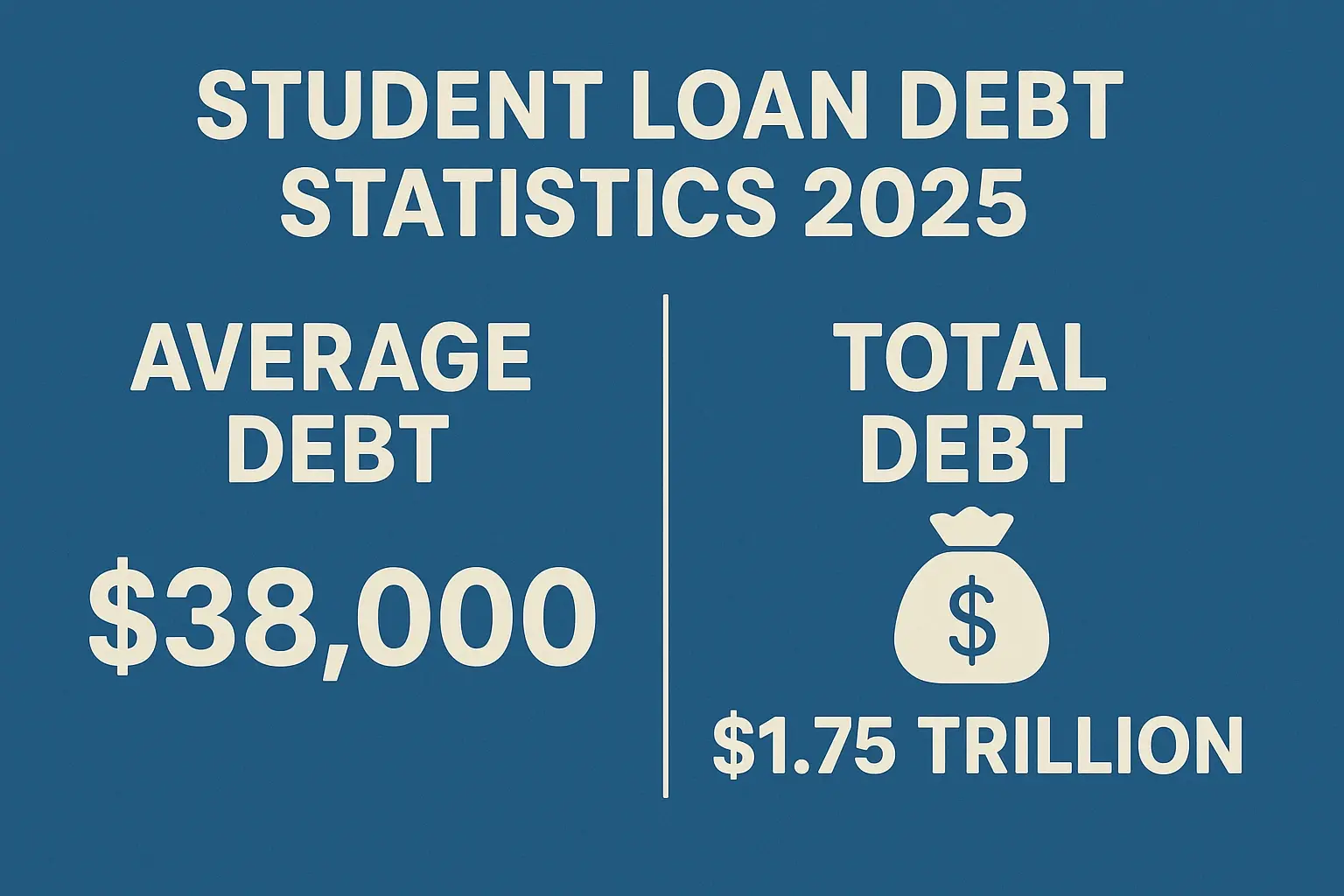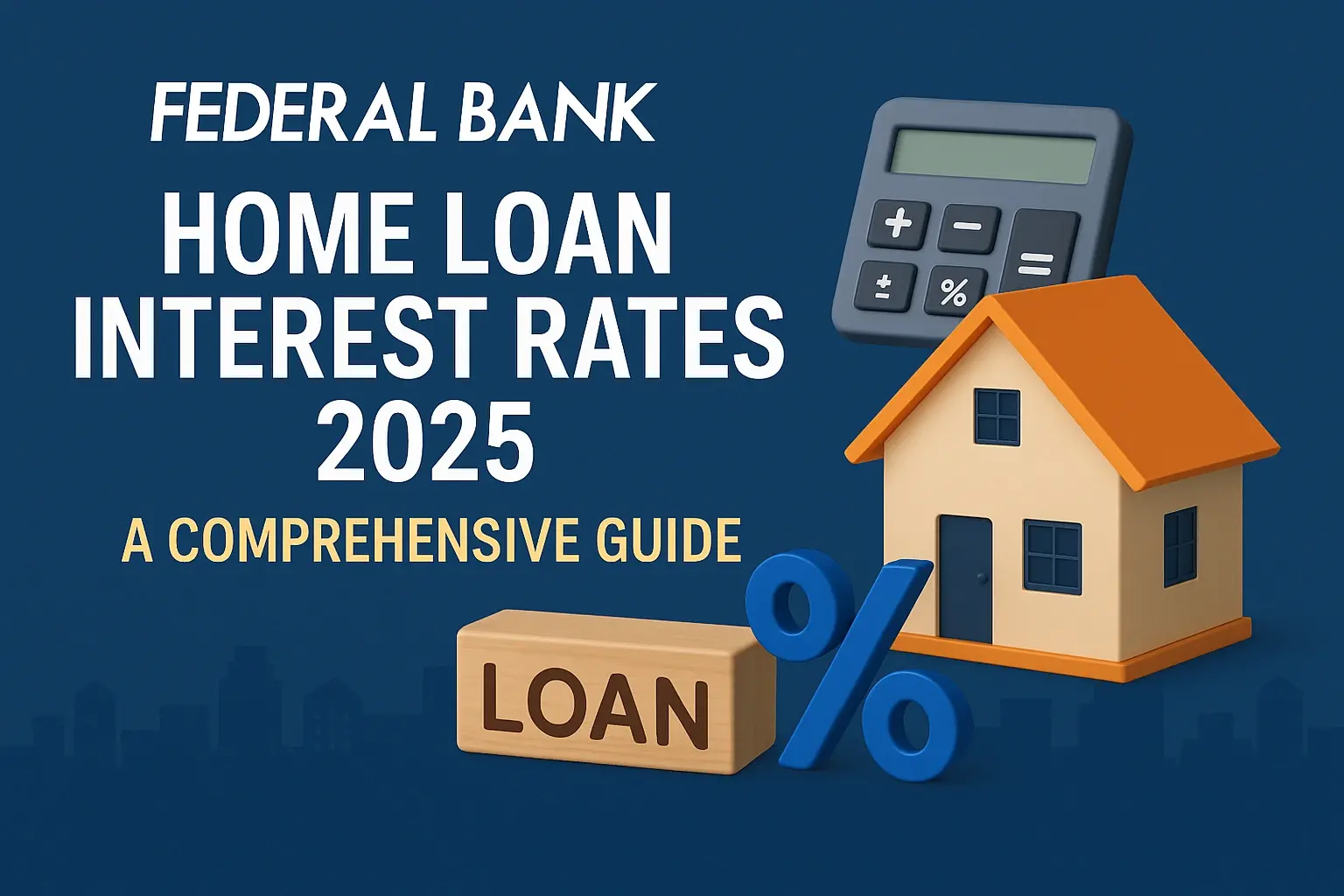-
Posted on: 17 Jul 2024
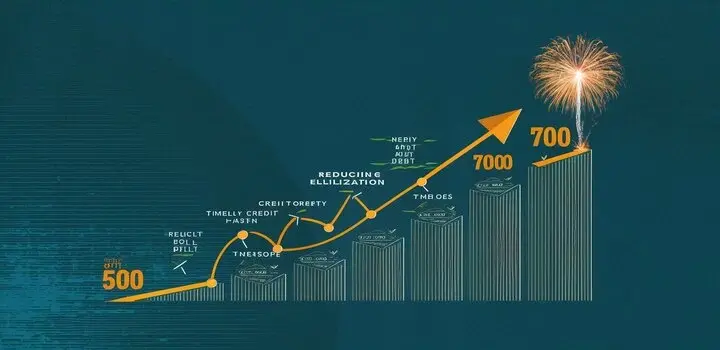
-
Having a low credit score can significantly impact your financial life. From higher interest rates on loans to difficulty renting an apartment, a low credit score can create numerous obstacles. One common question is: How long does it take to rebuild credit from 500 to 700? While there's no one-size-fits-all answer, this comprehensive guide will provide you with insights into the factors influencing your credit rebuilding timeline and practical strategies to accelerate your progress.
Understanding Your Starting Point: A Credit Score of 500
A credit score of 500 falls within the "poor" or "very poor" range according to most credit scoring models like FICO and VantageScore. This indicates a history of financial missteps, such as missed payments, high credit utilization, or even bankruptcy. Understanding what landed you in this range is crucial before starting the rebuilding process. Review your credit report carefully to identify negative marks and potential errors. You can obtain a free credit report from each of the three major credit bureaus (Equifax, Experian, and TransUnion) annually at annualcreditreport.com.
Key Factors Influencing Your Credit Rebuilding Timeline
Several factors will dictate how quickly you can move from a 500 credit score to a 700. These include:
- Severity of Past Credit Mistakes: Isolated late payments will have less impact than a history of defaults or bankruptcies.
- Age of Negative Information: Negative information on your credit report impacts your score less over time. Many negative items, like late payments, typically fall off your report after seven years. Bankruptcies may stay on your report for up to ten years.
- Consistency of Positive Credit Habits: Consistently paying your bills on time, maintaining low credit utilization, and demonstrating responsible credit management are vital for improving your score.
- Types of Credit Used: Having a mix of credit accounts (credit cards, installment loans) can positively impact your score, provided you manage them responsibly.
- Credit Utilization Ratio: This is the amount of credit you're using compared to your total available credit. Keeping this ratio below 30% (and ideally below 10%) is crucial.
Estimating the Timeline: A Realistic Perspective
While individual circumstances vary, here’s a general timeframe for rebuilding credit from 500 to 700:
- Aggressive Repair (6-12 Months): This timeline is achievable if you have only a few negative marks and are diligent about establishing positive credit habits immediately. This involves aggressively disputing errors, catching up on any past-due accounts, and consistently making on-time payments.
- Moderate Repair (1-2 Years): This is a more realistic timeline for individuals with a more extensive history of credit problems. It involves consistent effort to improve credit management and gradually build a positive credit history.
- Extended Repair (2+ Years): This timeline is common for individuals with serious credit issues, such as bankruptcy or multiple accounts in collections. It requires patience, persistence, and a long-term commitment to responsible credit management.
Remember that these are just estimates. Your actual progress may be faster or slower depending on your specific situation and the actions you take.
Actionable Steps to Rebuild Your Credit
Here's a detailed breakdown of the steps you can take to actively rebuild your credit:
1. Obtain and Review Your Credit Reports
Start by obtaining copies of your credit reports from all three major credit bureaus. Carefully review each report for accuracy and identify any errors or discrepancies. Common errors include:
- Incorrect account balances
- Accounts listed multiple times
- Accounts that don't belong to you (potentially indicating identity theft)
- Incorrect payment history
- Closed accounts listed as open
2. Dispute Inaccurate Information
If you find any errors on your credit reports, dispute them with the credit bureaus. You can do this online, by mail, or by phone. Be sure to provide supporting documentation to back up your claims. The credit bureaus are required to investigate your dispute and correct any errors. They typically have 30-45 days to respond.
3. Catch Up on Past-Due Accounts
Delinquent accounts are a major drag on your credit score. Prioritize getting current on any past-due accounts. If you're struggling to pay, contact your creditors to discuss potential payment plans or hardship programs.
4. Pay All Bills on Time, Every Time
Payment history is the single most important factor in your credit score. Make sure to pay all your bills on time, every time. Set up automatic payments to avoid missing deadlines. Even small, consistent late payments can significantly damage your credit score.
5. Lower Your Credit Utilization Ratio
As mentioned earlier, keeping your credit utilization ratio low is crucial. Aim to keep your balances below 30% of your credit limit on each credit card. Ideally, try to stay below 10%. For example, if you have a credit card with a $1,000 limit, try to keep your balance below $300 (and ideally below $100).
Strategies for Lowering Credit Utilization:
- Pay down your balances: The most direct way to lower your utilization is to pay down your outstanding balances.
- Request a credit limit increase: Contact your credit card issuers and request a credit limit increase. This will increase your total available credit, thereby lowering your utilization ratio. Be sure the increase doesn't tempt you to spend more.
- Open a new credit card: Opening a new credit card can also increase your total available credit. However, be careful not to overextend yourself. Only open a new card if you can manage it responsibly.
- Strategically time your payments: Making multiple payments throughout the month, instead of just one at the end, can help keep your balances lower and improve your utilization.
6. Consider a Secured Credit Card
If you're having trouble getting approved for a traditional credit card, consider a secured credit card. A secured credit card requires a cash deposit as collateral. This deposit typically serves as your credit limit. Secured credit cards are a great way to build or rebuild credit because they report your payment activity to the credit bureaus, just like traditional credit cards. After a period of responsible use, you may be able to graduate to an unsecured credit card and have your deposit returned.
7. Explore Credit-Builder Loans
Credit-builder loans are designed to help individuals with limited or poor credit establish a positive credit history. With a credit-builder loan, you make payments over a set period. The lender reports your payment activity to the credit bureaus, helping you build credit. Typically, the loan proceeds are held in a savings account and released to you after you've made all your payments. These loans can be a helpful tool, especially if you struggle with saving money, as the loan forces you to set aside funds.
8. Become an Authorized User
If you have a friend or family member with a credit card who has a good credit history, ask if you can become an authorized user on their account. As an authorized user, the account's payment history will be reported to your credit report, helping you build credit. However, be sure the primary cardholder uses the card responsibly, as their actions will affect your credit score as well.
9. Avoid Applying for Too Much Credit at Once
Applying for multiple credit accounts in a short period can negatively impact your credit score. Each credit application results in a hard inquiry on your credit report, which can lower your score. Furthermore, applying for too much credit at once can signal to lenders that you're a high-risk borrower.
10. Be Patient and Persistent
Rebuilding credit takes time and effort. Don't get discouraged if you don't see results immediately. Stay consistent with your efforts and continue to practice responsible credit management. Over time, your credit score will gradually improve.
The Role of Different Credit Scoring Models
It's important to note that there are different credit scoring models, such as FICO and VantageScore. Each model uses a slightly different algorithm to calculate your credit score. Lenders may use different scoring models, so your credit score may vary depending on which model is used. Understanding the basics of each model can help you better understand your credit and make informed decisions.
FICO Score
The FICO score is the most widely used credit scoring model. FICO scores range from 300 to 850. Factors contributing to your FICO score include:
- Payment History (35%)
- Amounts Owed (30%)
- Length of Credit History (15%)
- New Credit (10%)
- Credit Mix (10%)
VantageScore
VantageScore is another popular credit scoring model. VantageScore also ranges from 300 to 850. The relative influence of factors used to calculate your VantageScore differs somewhat from FICO. Although exact weightings are not public, VantageScore generally considers:
- Payment History
- Age and Type of Credit
- Percentage of Credit Limit Used
- Total Balances/Debt
- Available Credit
- New Credit
Maintaining Good Credit Once You've Rebuilt It
Rebuilding your credit is a significant accomplishment, but it's essential to maintain your good credit once you've achieved it. Here are some tips for maintaining a healthy credit score:
- Continue paying your bills on time: Never miss a payment!
- Keep your credit utilization low: Strive to keep your balances below 30% of your credit limits.
- Monitor your credit reports regularly: Check your credit reports at least once a year to ensure accuracy and identify any potential fraud.
- Avoid closing old credit accounts: Closing old credit accounts can reduce your overall available credit, which can increase your credit utilization ratio.
- Be mindful of your debt-to-income ratio: Lenders consider your debt-to-income ratio when evaluating loan applications. A high debt-to-income ratio can make it difficult to get approved for loans.




